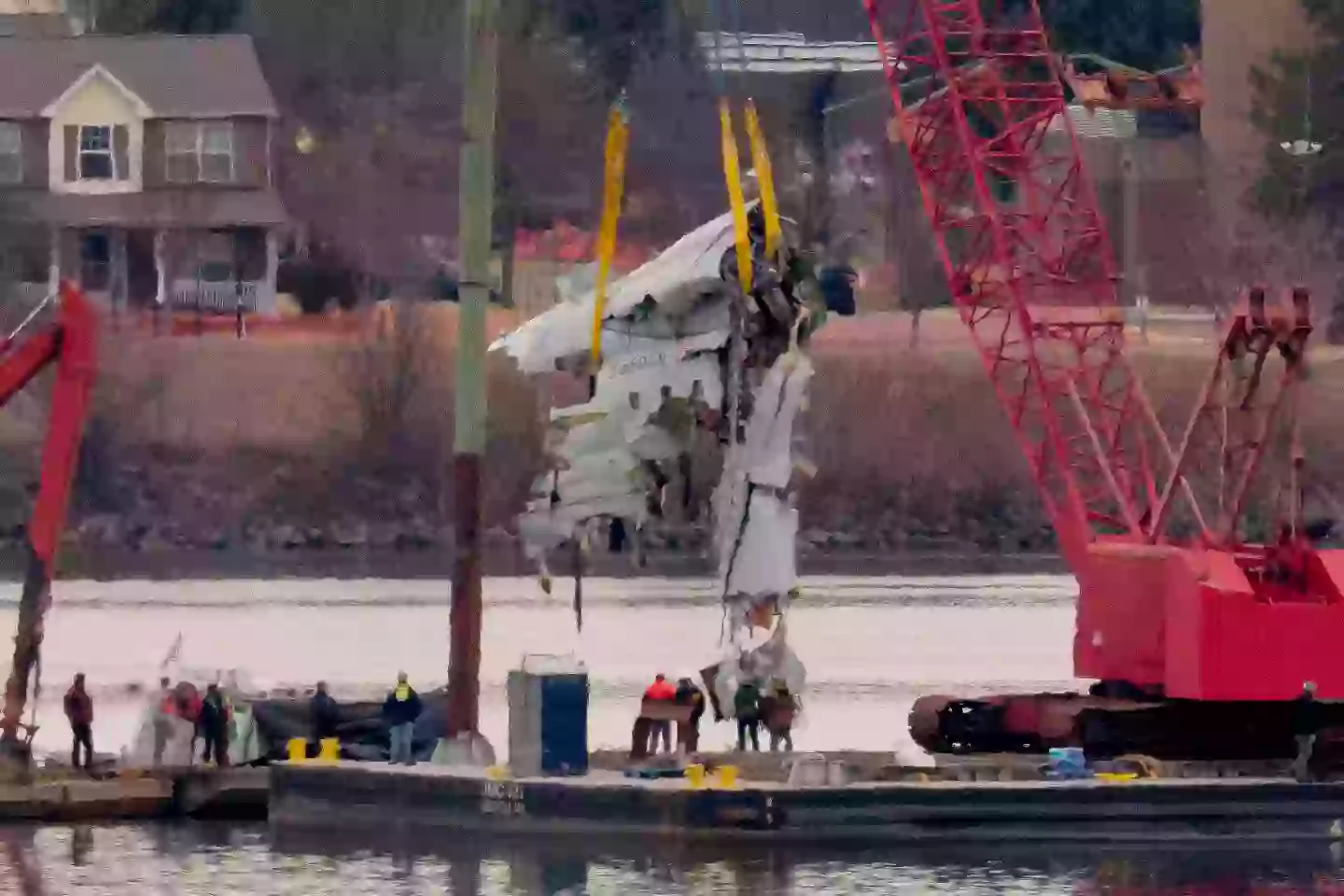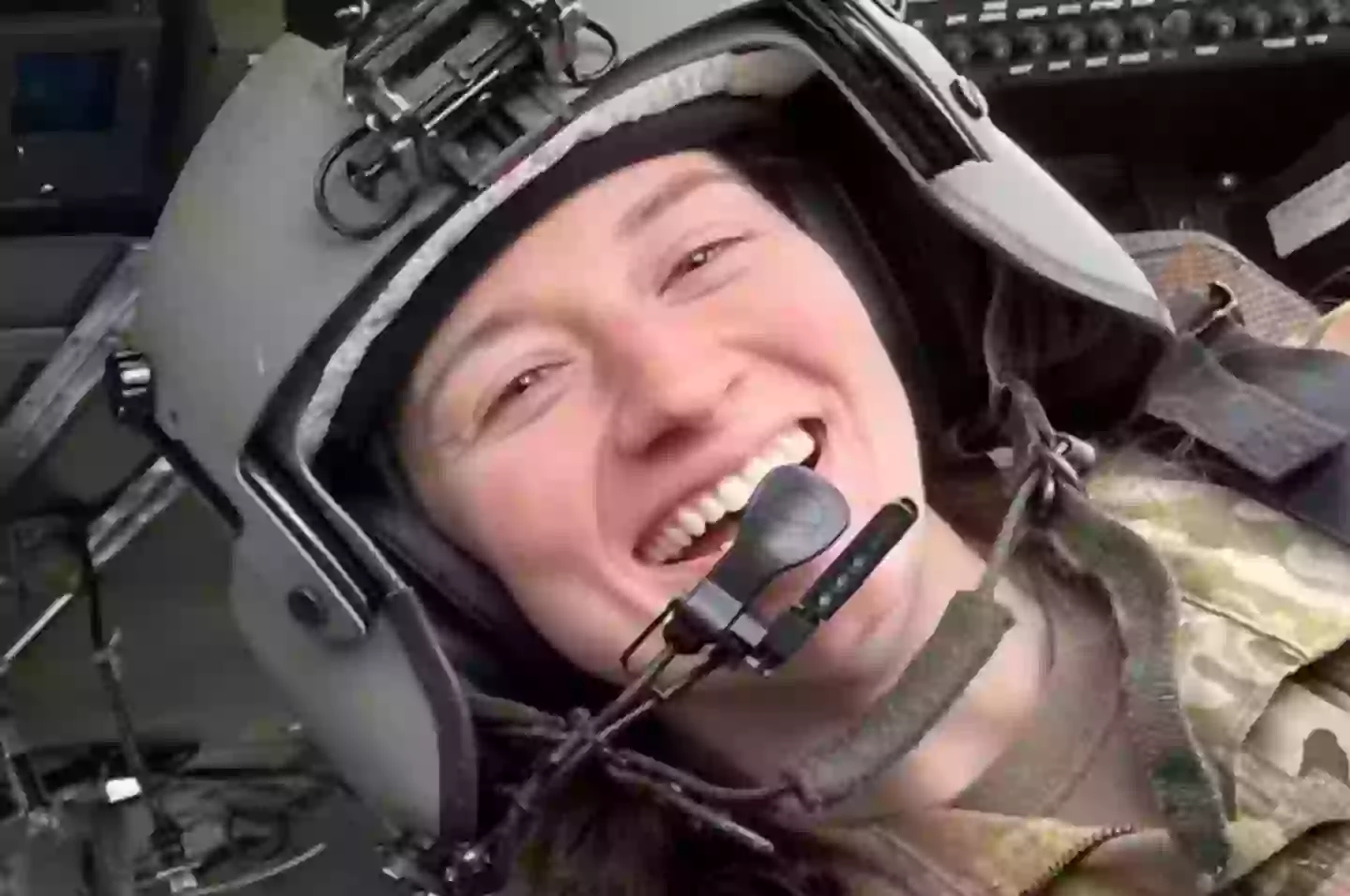
The pilot of the Black Hawk helicopter which crashed into a passenger plane before plunging into the Potomac River in January made two deadly mistakes, a new report has alleged.
The aviation world is still reeling from the tragedy that took place more than eight weeks ago, which left 67 people dead.
It has now been claimed that a sequence of communication errors played a significant part in the horror collision on 29 January, as Captain Rebecca M. Lobach reportedly ignored instructions to change course.
Advert
The military aircraft that the 28-year-old was piloting struck an American Airlines jet - which had been cleared to land at the Ronald Reagan Washington National Airport - in the skies above Washington DC.
Investigators had previously suggested that the helicopter had been flying too high, with the chopper fatally flying into the plane's path.
And now, a bombshell new report by The New York Times has alleged that Lobach did not abide by directions she was given while in the air conducting her annual flight evaluation.
Lobach was onboard the helicopter with co-pilot, Chief Warrant Officer 2 Andrew Loyd Eaves, 39, who was acting as her flight instructor, as well as Staff Sgt. Ryan Austin O’Hara, 28.
Advert
According to the US publication, transcripts of the chopper's communications with air traffic control have offered further insight into what went wrong before the crash.
The crew on the helicopter had received an alert from air traffic controllers which explained that an airliner was nearby, and this message was reportedly acknowledged by both Lobach and Eaves.
One of the military pilots then asked to fly by 'visual separation', meaning that the pilots would take on the responsibility of maintaining a safe distance from others with their own judgement, while monitoring nearby activity in the sky.
It is a commonly used practice which sees those manning the aircraft make their own observations rather than relying on guidance from air traffic control.
The air traffic controller was then heard informing the pilots that visual separation had been 'approved' in audio recordings from the helicopter.
Advert

At this point, it is believed that the American Airlines flight which had departed from Wichita, Kansas, was circling to land.
For unknown reasons, Lobach did not execute visual separation effectively - and 15 seconds later, the chopper collided with the American Airlines plane which was carrying 60 passengers and four crew.
Her colleague Eaves had encouraged her to change course before this fateful moment, but it is alleged that she failed to do so.
The report by The New York Times claims: "The Black Hawk was 15 seconds away from crossing paths with the jet. Warrant Officer Eaves then turned his attention to Captain Lobach.
Advert
"He told her he believed that air traffic control wanted them to turn left, toward the east river bank.
"Turning left would have opened up more space between the helicopter and Flight 5342, which was heading for Runway 33 at an altitude of roughly 300 feet. She did not turn left."
The publication suggested that Lobach may have done this because she did not spot the plane which was dangerously close, or that she was perhaps unable to pilot the chopper to a safer position.

"There is no indication that [Capt. Rebecca Lobach] was suffering from health issues at the time or that a medical event affected her during those final moments aboard the Black Hawk, according to friends and people familiar with the crash investigation, which included autopsies and performance log reviews," the report said.
Advert
Lobach had around 500 hours of Black Hawk experience under her belt, the US Army previously said, and she had served as an aviation officer since July 2019.
She had accumulated a host of awards during her tenure, including an Army Commendation Medal, Army Achievement Medal, National Defense Service Medal and Army Service Ribbon.
It remains unclear as to why she allegedly failed to fulfil the visual separation and why she supposedly ignored Eaves' orders to turn left.
"Multiple layers of safety precautions failed that night," Katie Thomson, the Federal Aviation Administration’s deputy administrator under former president Joe Biden, said.
It was also reported that communications between air traffic controllers and the helicopter crew 'cut out' at some points, suggesting that crucial information might have gone unheard.
Brig. Gen. Matthew Braman, the Army’s director of aviation, said: "I think what we’ll find in the end is there were multiple things that, had any one of them changed, it could have well changed the outcome of that evening."
The National Transportation Safety Board are expected to issue their final report detailing the causes on the crash by early next year.
Topics: US News, American Airlines , Travel